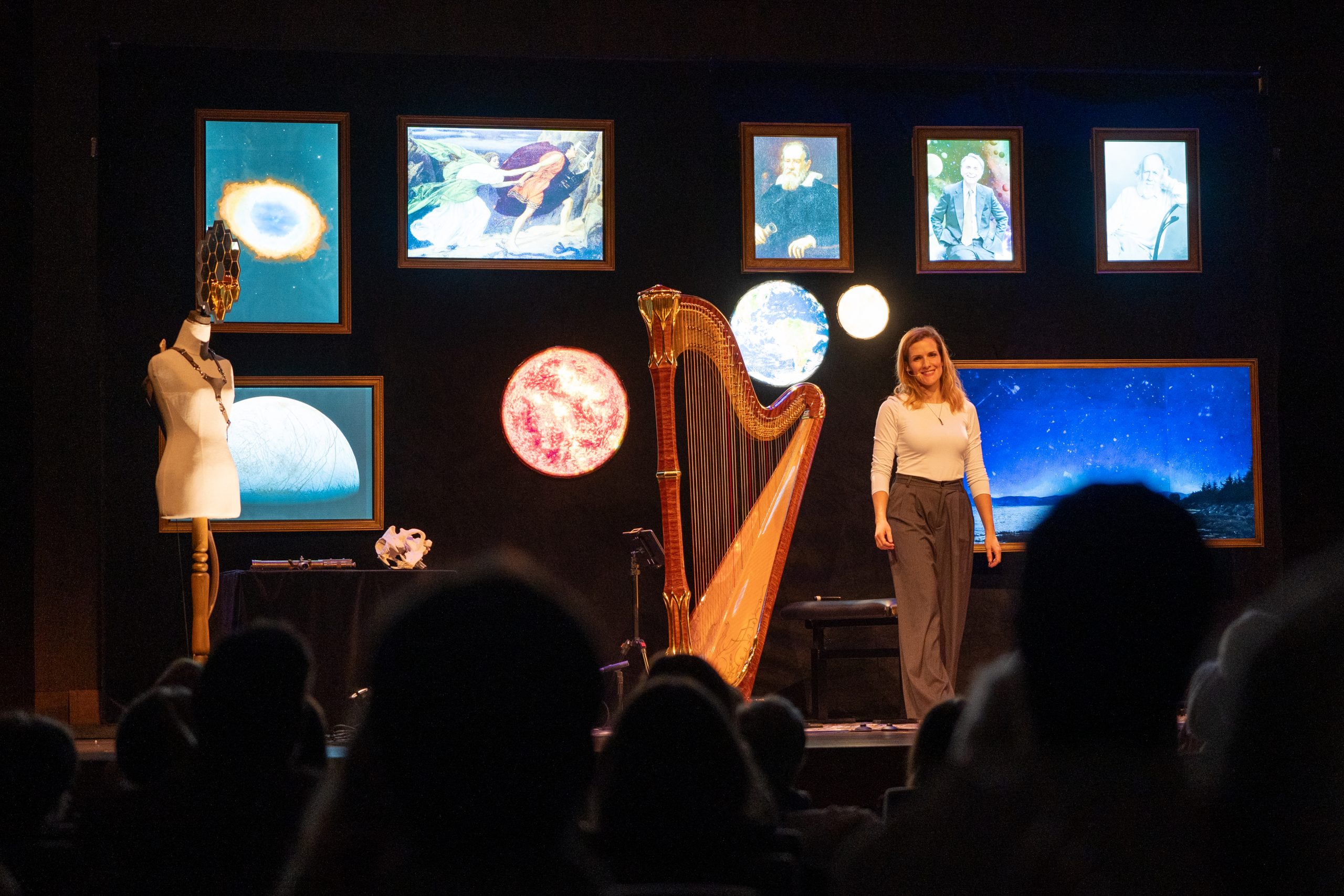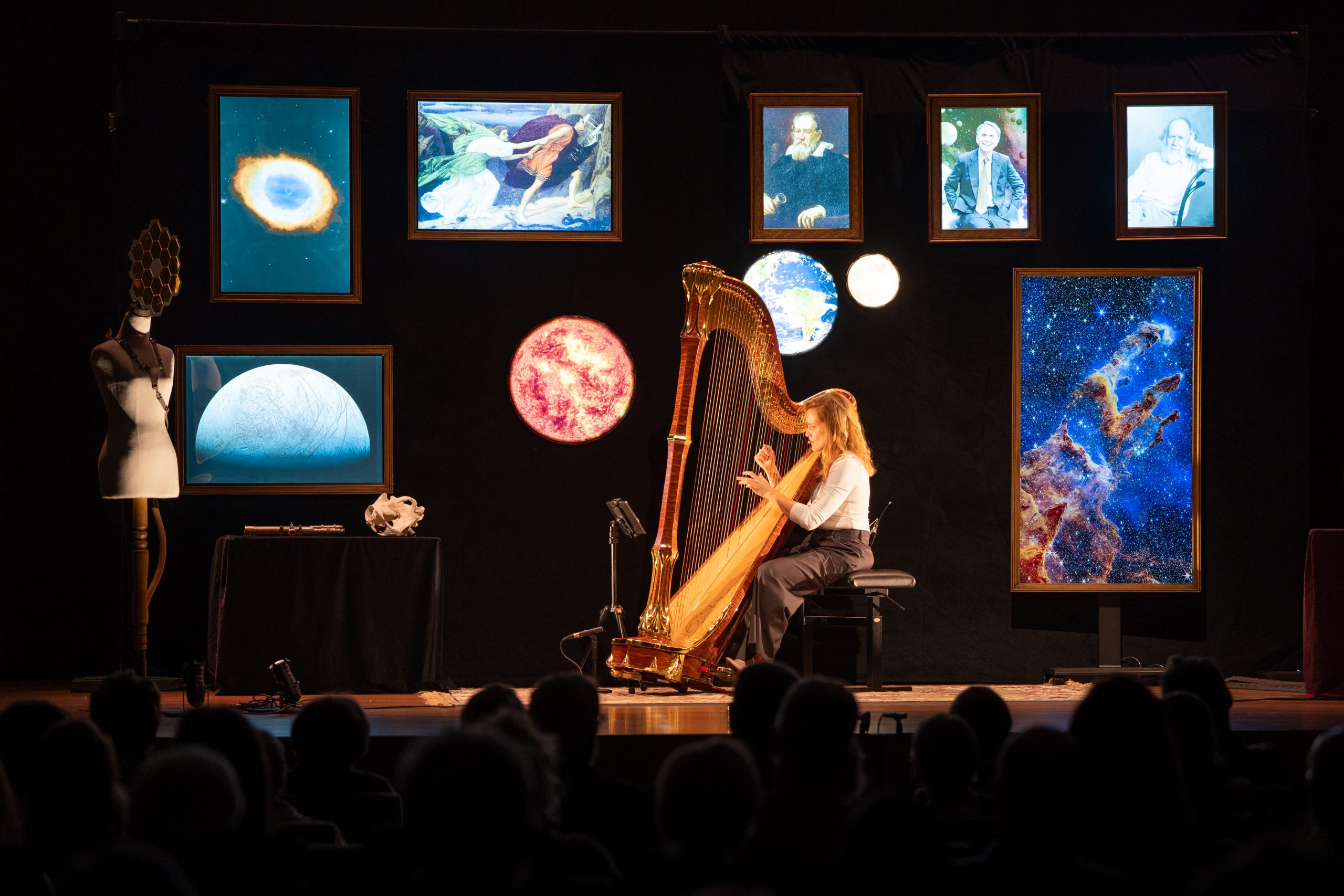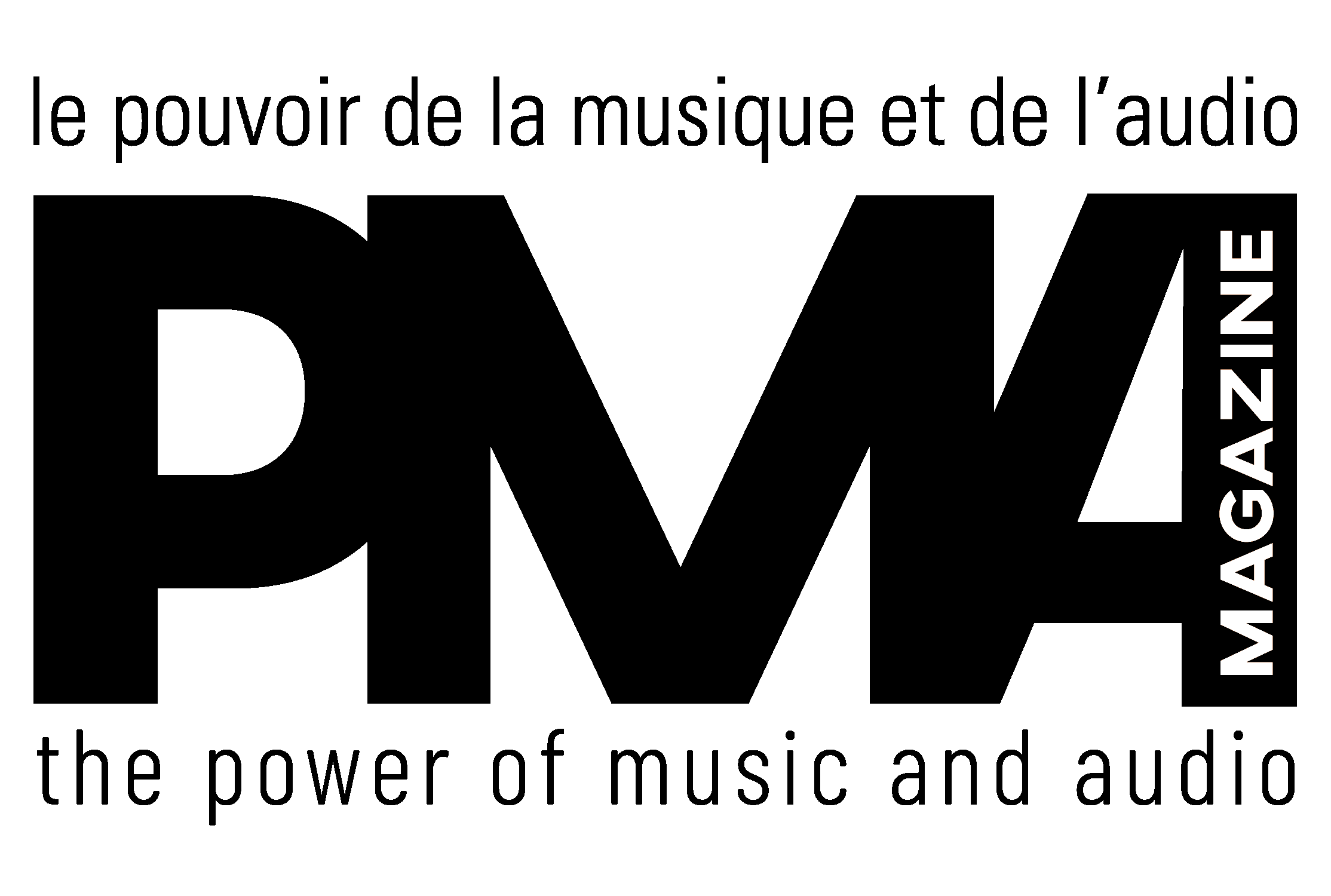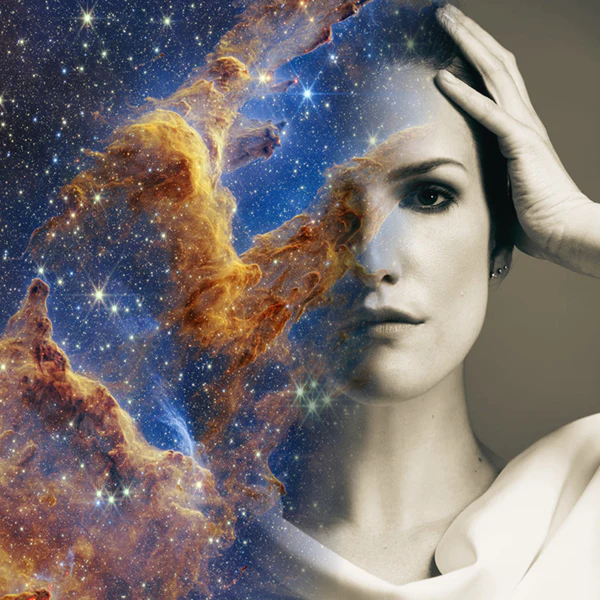
Montreal harpist Valérie Milot launched her sixth studio album Nebulæ with a live performance at Salle Bourgie, a show venue in a refurbished section of the Montreal Museum of Fine Arts. It offers more comfortable seating than your typical church while keeping intact some of the pleasant reverberant acoustics churches are know for.
I’m sorry to admit that prior to this event I’d never heard of Valérie Milot, who, I later learned, is an outstanding harpist who’s garnered many awards throughout her career—including the Prix d’Europe in 2008 as the first harpist in nearly 100 years to receive it—and played with some major orchestras. She even has a YouTube channel that counts thousands of followers.
I attended the concert on invitation. At first I was unsure of what to expect of a harp-solo concert. I was accompanied by my wife, seated near the back of the hall but with a decent view of Valérie. She was the only person onstage, surrounded by several visual props that helped tell the thematic story of her album—Nebulæ is, essentially, a concept album, centered on interplanetary exploration and humanity’s place in the universe. The spoken portions of Valérie’s presentation were witty and enlightening, serving as the interluding glue that held the musical pieces—and journey—together.

It was all very enjoyable and, as usually happens when I’ve just heard an artist live and want to support them, I bought Valérie’s CD on my way out of the venue—an LP version is also available, as well as high-res downloads. That’s when I noticed the CD was a 2xHD production, an audiophile label known for its natural, harmonically rich recordings. 2xHD is co-owned by René Laflamme of high-end Swiss audio company Nagra. The label’s other owner is superstar recording engineer of superstars, André Perry.
Listening to it on my home system, the CD’s sound—recorded by Carl Talbot in a church—was what I expected: warm, reverberant, textured, transparent. What I didn’t expect was realizing how much of the melodies, the tonal shadings, the finger-on-strings nuances I had missed during Valérie’s live performance.
Granted, I was a little far from the stage, but still, unless you’re sitting dead-center in the first few rows, with no audience heads blocking your line of sound, you’re bound to miss some of the intricate technique, harmonic flourish, and musical substance that make the music and musicianship so compelling.
In a similar way, a composition may hold the promise of greatness, but it’s really only as good as how it’s interpreted and performed by the artist—that’s the part we actually hear. And if key elements of that performance are obscured, we’re not getting the full picture. That’s a shame not just for us, the listeners, but also for the composer and the artist who worked so hard to bring something truly special to life.
Therein lies the biggest difference between attending a concert from the 12th row right of the stage and hearing a great recording through a quality sound system: how much of the composition you’re able to hear. A recording also offers the benefit of permanence—you can revisit it as often as you like, replaying a passage you missed or want to savour again. A live event, by contrast, is transitory. Almost as soon as a note is played, it vanishes for good. If you missed it the first time or wish you could hear it again, well, tough luck.
This is by no means a slight against the live concert experience. I love going to concerts and thoroughly enjoyed seeing and hearing Valérie play her majestic, gilded harp in person. Her skill is fascinating to watch, offering a glimpse of a master at the top of her game. Nor is it a slight on the venue itself; Salle Bourgie is a good-sounding hall with wonderful acoustics. But concerts aren’t just musical events, they’re social ones. And as wonderful as a night out can be—and this night certainly was—when it comes to strictly hearing all of the oeuvre, nothing beats a great recording played through a quality system.
You could reasonably argue that not every piece of music demands the utmost fidelity. But I’d argue that Valérie’s arrangements and skill do. So much of her playing is delicate, nuanced, and micro-expressive that attentive listening is rewarded. The way she strums and plucks and mutes her notes is mesmerizing. It’s another language, another universe nested within the broader one depicted on Nebulæ. Valérie has absolute control over her instrument, and that mastery is most evident in a well-made recording like Nebulæ.

There’s also, of course, the matter of the compositions themselves. Valérie’s arrangements and musicianship honour them, as they should. Nebulæ contains timeless works by masters such as Claude Debussy, Franz Liszt, and others. It also features two pieces written by Quebec composers—Denis Gougeon and Amélie Fortin—both of whom were at the concert I attended. Their compositions did not feel out of place alongside those of the great composers.
If the opportunity arose and if I were you, I would, just as I have, see Valérie strum her magic onstage—she plays with intoxicating grace, and her story about our relationship with the universe is fascinating. And I would listen to her album Nebulæ, or one of her other albums, in the privacy of my home. That way, you get the best of both worlds.
For more on Valérie Milot, click here.
For more on 2xHD, click here.
















Leave a Reply